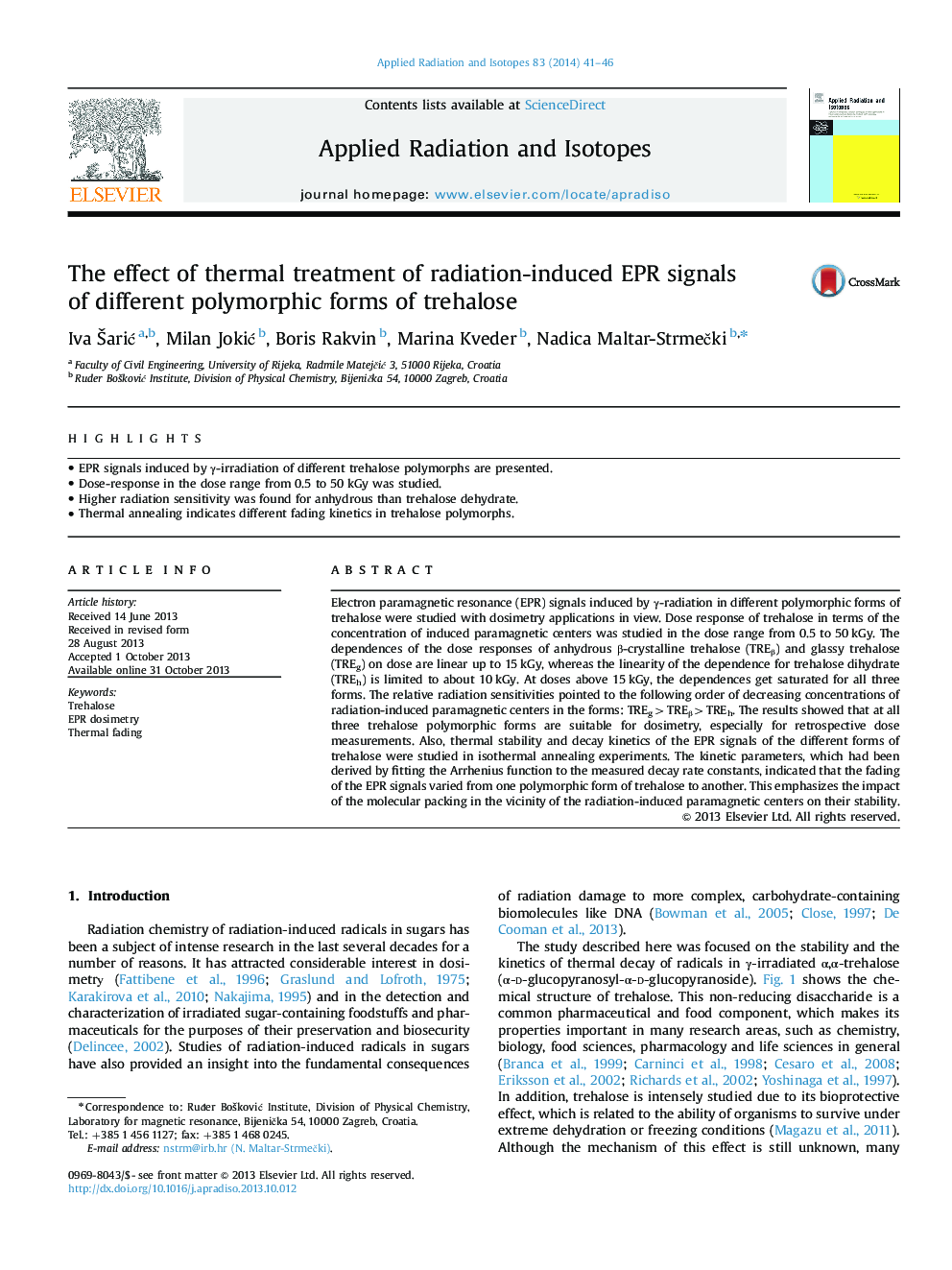| Article ID | Journal | Published Year | Pages | File Type |
|---|---|---|---|---|
| 1877641 | Applied Radiation and Isotopes | 2014 | 6 Pages |
•EPR signals induced by γ-irradiation of different trehalose polymorphs are presented.•Dose-response in the dose range from 0.5 to 50 kGy was studied.•Higher radiation sensitivity was found for anhydrous than trehalose dehydrate.•Thermal annealing indicates different fading kinetics in trehalose polymorphs.
Electron paramagnetic resonance (EPR) signals induced by γ-radiation in different polymorphic forms of trehalose were studied with dosimetry applications in view. Dose response of trehalose in terms of the concentration of induced paramagnetic centers was studied in the dose range from 0.5 to 50 kGy. The dependences of the dose responses of anhydrous β-crystalline trehalose (TREβ) and glassy trehalose (TREg) on dose are linear up to 15 kGy, whereas the linearity of the dependence for trehalose dihydrate (TREh) is limited to about 10 kGy. At doses above 15 kGy, the dependences get saturated for all three forms. The relative radiation sensitivities pointed to the following order of decreasing concentrations of radiation-induced paramagnetic centers in the forms: TREg>TREβ>TREh. The results showed that at all three trehalose polymorphic forms are suitable for dosimetry, especially for retrospective dose measurements. Also, thermal stability and decay kinetics of the EPR signals of the different forms of trehalose were studied in isothermal annealing experiments. The kinetic parameters, which had been derived by fitting the Arrhenius function to the measured decay rate constants, indicated that the fading of the EPR signals varied from one polymorphic form of trehalose to another. This emphasizes the impact of the molecular packing in the vicinity of the radiation-induced paramagnetic centers on their stability.
